Cost-Effective Expansion for Agribusiness: Lida Group’s Pre-Engineered Steel Farm Houses Reduce Construction Time and Budget.
2025-Aug-26 17:01:34
By Admin
1. Introduction
The global agribusiness sector is in a period of rapid growth, driven by rising global food demand, expanding urbanization, and the adoption of modern farming practices. From smallholder cooperatives scaling up operations to large-scale agricultural corporations expanding into new markets, agribusinesses of all sizes face a common challenge: how to expand infrastructure—including farm houses, storage facilities, and processing hubs—without overspending or missing critical market opportunities.
Traditional farm house construction, relying on brick, concrete, or wood, has long been a barrier to cost-effective expansion. Concrete structures require months of on-site work, high labor costs, and expensive raw materials; wooden buildings, while cheaper upfront, demand frequent maintenance and have short lifespans; and both options struggle to adapt to changing operational needs. For agribusinesses, these limitations translate to delayed project timelines (missing harvest windows or market launches) and inflated budgets (eating into profits from expanded production).
Lida Group, a global leader in pre-engineered steel structure solutions, has addressed this gap with its pre-engineered steel farm houses. Unlike conventional construction, these systems leverage off-site manufacturing, standardized components, and modular design to cut both construction time and budget—while maintaining the strength, durability, and flexibility agribusinesses need. This article explores how Lida Group’s pre-engineered steel farm houses enable cost-effective agribusiness expansion. It examines the financial and temporal pressures facing expanding agribusinesses, breaks down the cost and time-saving mechanisms of pre-engineered steel, presents real-world case studies of successful implementations, and highlights the long-term value of these structures. By the end, it becomes clear why pre-engineered steel has become the go-to choice for agribusinesses seeking to grow efficiently and sustainably.
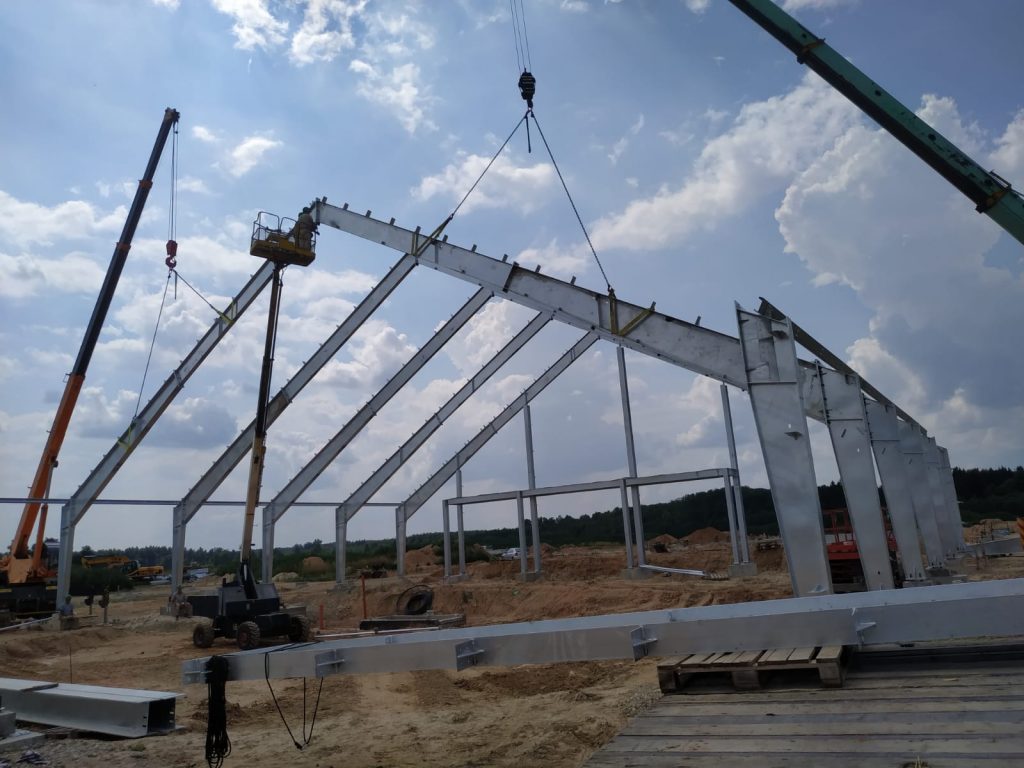
2. The Cost and Time Pressures of Agribusiness Expansion
To understand the impact of Lida Group’s solutions, it is first critical to quantify the challenges agribusinesses face when expanding infrastructure. These challenges, rooted in time and cost constraints, can derail expansion plans or reduce their profitability—making efficient construction not just a convenience, but a strategic necessity.
2.1 Tight Market Windows: The Cost of Delayed Construction
Agribusiness expansion is often tied to time-sensitive opportunities:
- Harvest cycles: A farm expanding storage to accommodate a larger crop must have facilities ready before harvest—delays can force the business to rent expensive temporary storage or sell crops at a discount to avoid spoilage. For example, a corn farmer expanding from 500 to 1,000 acres needs additional storage by late summer; a 6-week delay could result in $50,000+ in temporary storage costs or lost revenue from discounted sales.
- Market demand: Agribusinesses entering new markets (e.g., organic produce, specialty crops) must move quickly to capitalize on consumer trends. A 2023 survey by the International Food and Agribusiness Management Association (IFAMA) found that 60% of agribusinesses cite “speed to market” as the top factor in expansion success—delays of 3+ months reduce the chance of capturing market share by 40%.
- Regulatory deadlines: Many regions require agribusinesses to upgrade infrastructure (e.g., food-safe storage, animal welfare-compliant housing) by specific dates. Missing these deadlines can result in fines or operational shutdowns.
Conventional construction timelines—12–16 weeks for a 1,000-square-meter concrete farm house—often miss these windows. Pre-engineered steel, by contrast, cuts construction time by 50–60%, ensuring agribusinesses meet critical deadlines.
2.2 Budget Constraints: Balancing Expansion and Profitability
Agribusinesses operate on thin profit margins—averaging 5–15% for most crops and livestock operations. Expanding infrastructure requires upfront capital that could otherwise be invested in seeds, equipment, or labor. Conventional construction exacerbates budget pressures in three key ways:
- Cost overruns: On-site construction is prone to unexpected expenses—weather delays, material price hikes, or labor shortages can increase budgets by 20–30%. A 2022 study by the Agricultural and Applied Economics Association found that 75% of agribusinesses report cost overruns on conventional farm construction projects.
- High labor costs: Concrete and wooden construction require skilled labor (masons, carpenters) that is in short supply in many rural areas. Labor costs account for 30–40% of conventional construction budgets, compared to 15–20% for pre-engineered steel.
- Hidden long-term costs: Wooden structures require annual maintenance (painting, termite treatment) costing 2–3% of the initial build price; concrete structures crack over time, requiring repairs that can add \(10,000–\)20,000 every 5–10 years.
Pre-engineered steel addresses all these issues, with fixed upfront costs, lower labor requirements, and minimal long-term maintenance—freeing up capital for core agricultural operations.
2.3 Flexibility Needs: Adapting to Changing Operations
Agribusiness expansion is rarely linear. A farm that expands to grow tomatoes may later switch to peppers; a livestock operation may add a processing facility. Conventional structures are rigid—reconfiguring a concrete warehouse to add a processing line can cost 50% of the original build price and take 8–10 weeks. Pre-engineered steel’s modular design allows for easy adjustments, but this flexibility is often overlooked in discussions of cost and time—yet it is critical for long-term cost-effectiveness.

3. How Lida Group’s Pre-Engineered Steel Farm Houses Cut Costs
Lida Group’s pre-engineered steel farm houses reduce costs at every stage of the construction process—from design and manufacturing to on-site assembly and long-term maintenance. These cost savings are not just incremental; they are transformative, often reducing total project costs by 25–40% compared to conventional construction.
3.1 Design Phase: Standardization Reduces Engineering Costs
The design phase of conventional construction is time-consuming and expensive, requiring custom blueprints for every project. Lida Group’s pre-engineered approach streamlines this with:
- Standardized Component Libraries: Lida Group maintains a library of pre-designed, tested components—beams, columns, roof trusses, and wall panels—that can be combined to create farm houses of any size (from 500 to 10,000+ square meters). This eliminates the need for custom engineering for every project, cutting design costs by 60–70%. For example, a 1,500-square-meter farm house using standardized components requires just 2–3 weeks of design work and \(5,000–\)8,000 in engineering fees, compared to 6–8 weeks and \(15,000–\)25,000 for a custom concrete design.
- Modular Configurations: Clients can choose from pre-defined “expansion packages” (e.g., “storage + office,” “livestock housing + feed room”) that are pre-engineered to work together. This reduces the time and cost of designing complex, multi-functional spaces.
- Digital Design Tools: Lida Group uses 3D modeling software to create virtual prototypes of the farm house, allowing clients to visualize the final structure and make changes early—avoiding costly design revisions during construction.
3.2 Manufacturing Phase: Off-Site Production Minimizes Waste and Labor
Conventional on-site construction generates significant waste (15–20% of materials) and requires high labor costs. Lida Group’s off-site manufacturing addresses both:
- Precision CNC Manufacturing: All steel components are produced in Lida Group’s factories using Computer Numerical Control (CNC) machines, which cut, drill, and weld with tolerances of less than 1 mm. This precision eliminates material waste—scrap steel is recycled back into production, reducing material costs by 10–15%. For a 1,000-square-meter farm house, this translates to \(3,000–\)5,000 in material savings.
- Reduced Labor Costs: Factory production is highly automated, requiring 50–60% fewer workers than on-site construction. Lida Group’s factories use robotic welding systems and automated assembly lines, which are faster and more consistent than manual labor. Labor costs for manufacturing pre-engineered components are 30–40% lower than for on-site concrete or wooden construction.
- Bulk Material Purchasing: Lida Group sources steel in bulk from global suppliers, negotiating lower prices than small-scale contractors can achieve. This bulk purchasing power reduces steel costs by 8–12%, a savings passed directly to clients.
3.3 On-Site Assembly: Faster Installation Lowers Labor and Overhead Costs
On-site assembly is where pre-engineered steel delivers some of its most significant cost savings. Unlike conventional construction, which requires weeks of on-site casting, cutting, and fitting, Lida Group’s components are ready to assemble:
- Simplified Installation: Pre-engineered components are pre-cut, pre-drilled, and labeled with unique identifiers (e.g., “Beam C-07”), making on-site assembly straightforward. A team of 4–6 workers can assemble a 1,000-square-meter farm house in 1–2 weeks, compared to 4–6 weeks for a concrete structure. This cuts on-site labor costs by 50–60%.
- Minimal Equipment Needs: Conventional concrete construction requires heavy equipment (e.g., concrete mixers, cranes for pouring) that rents for \(1,000–\)2,000 per day. Lida Group’s pre-engineered components are lightweight enough to be installed with small cranes (20–30 tons) or even forklifts, reducing equipment rental costs by 70–80%.
- Fewer Weather Delays: On-site concrete work is highly weather-dependent—rain, extreme heat, or cold can shut down construction for days. Pre-engineered steel assembly is less weather-sensitive; components can be installed in rain or mild cold, reducing weather-related delays (and associated labor costs) by 80–90%.
3.4 Long-Term Costs: Durability Reduces Maintenance and Replacement Expenses
The cost savings of pre-engineered steel extend far beyond construction. Lida Group’s farm houses are designed for durability, minimizing long-term maintenance and replacement costs:
- Corrosion Resistance: All steel components are hot-dip galvanized, which resists rust for 20–50 years. This eliminates the need for annual painting (required for wooden structures) or corrosion repairs (common with uncoated steel), saving \(2,000–\)5,000 per year in maintenance costs.
- Structural Durability: S355JR steel, the primary material used, has a lifespan of 50+ years—twice as long as wooden structures (20–30 years) and 1.5 times as long as concrete (30–40 years). This means agribusinesses do not need to replace or rebuild farm houses as frequently, reducing long-term capital expenditure.
- Low Maintenance Requirements: Steel does not rot, warp, or attract pests (e.g., termites), so maintenance is limited to occasional cleaning and inspection. A Lida Group farm house requires just \(500–\)1,000 per year in maintenance, compared to \(2,000–\)4,000 for a wooden farm house of the same size.

4. How Lida Group’s Pre-Engineered Steel Farm Houses Shorten Construction Time
Time is as valuable as money for expanding agribusinesses, and Lida Group’s pre-engineered steel farm houses deliver dramatic time savings—cutting total construction time from months to weeks. This speed is achieved through three interconnected strategies: parallel processing, standardized assembly, and minimal on-site work.
4.1 Parallel Processing: Manufacturing and Site Preparation Happen Simultaneously
The biggest advantage of pre-engineered steel is that manufacturing and site preparation can occur at the same time—a process called “parallel processing.” In conventional construction, site preparation (clearing land, pouring foundations) must be completed before any building work begins. With pre-engineered steel:
- Weeks 1–2: Design finalization and manufacturing start. While Lida Group’s engineers finalize the farm house design (2–3 weeks), the client can begin site preparation (clearing, grading, foundation work).
- Weeks 3–4: Manufacturing continues, and foundation work is completed. Lida Group’s factories produce steel components (3–4 weeks for a 1,000-square-meter farm house) while the client pours concrete foundations (2–3 weeks).
- Weeks 5–6: On-site assembly begins. Once components are manufactured and delivered, assembly takes just 1–2 weeks.
For a 1,000-square-meter farm house, this parallel processing cuts total construction time from 12–16 weeks (conventional concrete) to 5–6 weeks—a 60% reduction. For agribusinesses racing to meet harvest deadlines or market opportunities, this speed is transformative.
4.2 Standardized Assembly: No On-Site Modifications
Conventional construction is slowed by on-site modifications—cutting beams to size, adjusting concrete forms, or fixing measurement errors. Lida Group’s pre-engineered components eliminate this:
- Precision Manufacturing: CNC machines produce components to exact specifications, so they fit together seamlessly on-site. There is no need for on-site cutting, drilling, or welding (except for minor connections), which can add 2–3 weeks to conventional construction.
- Labeled Components: Every component is labeled with a unique code that corresponds to the assembly plan (e.g., “Column A-03 connects to Beam B-05”). This makes it easy for the construction team to identify and install components, reducing errors and delays.
- Simplified Instructions: Lida Group provides detailed, step-by-step assembly instructions with 3D diagrams, so even teams with limited steel construction experience can work efficiently. This reduces the need for specialized labor, which is often in short supply and can cause delays.
4.3 Minimal On-Site Work: Reducing Dependencies
Conventional construction requires multiple on-site processes—pouring concrete, framing, roofing, insulation, and finishing—each dependent on the previous one. A delay in one process (e.g., concrete curing) holds up the entire project. Lida Group’s pre-engineered steel minimizes these dependencies:
- Integrated Components: Roof and wall panels come pre-insulated and pre-finished, eliminating the need for separate insulation and finishing phases. A single team can install the frame, roof, and walls in one continuous process, rather than waiting for different trades (e.g., roofers, insulators) to complete their work.
- Fast Foundation Work: Pre-engineered steel farm houses use shallow, simple foundations (150–200 mm thick) that cure in 7–10 days, compared to 14–21 days for deep concrete foundations. This speeds up the critical early phase of construction.
- Reduced Material Delivery: Conventional construction requires multiple material deliveries (concrete, lumber, roofing materials), each of which can be delayed. Lida Group delivers all steel components in one or two shipments, reducing the risk of supply chain delays.
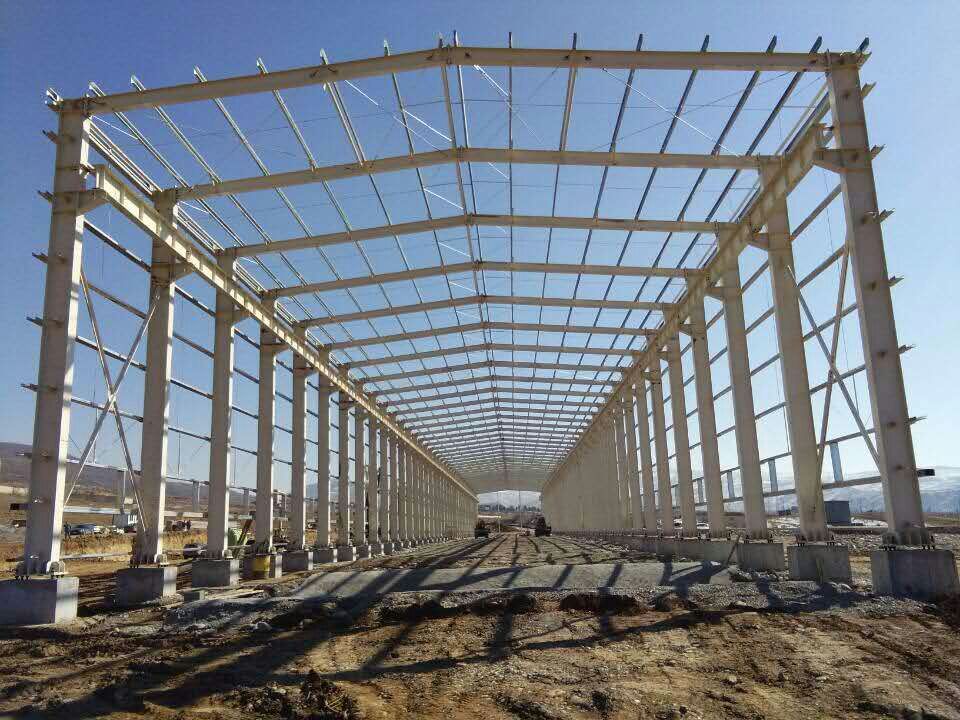
5. Technical Advantages: Why Pre-Engineered Steel Delivers on Cost and Time
The cost and time savings of Lida Group’s farm houses are not just due to process—they are rooted in the technical advantages of pre-engineered steel itself. These advantages ensure that while costs are lower and timelines shorter, quality, strength, and functionality are not compromised.
5.1 High-Strength Steel: Durability at a Lower Cost
Lida Group uses S355JR structural steel, a high-strength low-alloy (HSLA) steel with a minimum yield strength of 355 MPa. This steel offers two key cost and time benefits:
- Lightweight yet Strong: S355JR steel is 30% stronger than standard mild steel, so smaller, lighter components can support the same loads. This reduces material costs (less steel is needed) and makes components easier to transport and install—cutting shipping costs by 15–20% and on-site assembly time by 10–15%.
- Reduced Foundation Requirements: The lighter weight of steel components means foundations can be smaller and shallower. A concrete foundation for a pre-engineered steel farm house costs 40–50% less than for a concrete farm house of the same size, and takes half the time to pour and cure.
For example, a 1,500-square-meter pre-engineered steel farm house requires a foundation that costs \(15,000–\)20,000 and takes 2 weeks to complete, compared to \(30,000–\)40,000 and 4 weeks for a concrete farm house.
5.2 Modular Design: Flexibility Without Extra Cost
Agribusinesses often need to expand or reconfigure infrastructure as operations grow. Lida Group’s modular design allows for this flexibility at minimal cost:
- Add-On Modules: Pre-engineered steel farm houses are built in modular units (e.g., 10m x 20m) that can be easily added later. For example, a 1,000-square-meter farm house can be expanded by 500 square meters with just 1–2 weeks of work and \(20,000–\)30,000 in costs—compared to \(50,000–\)70,000 and 6–8 weeks for a concrete expansion.
- Reconfigurable Interiors: Internal walls are made of lightweight steel panels that can be moved or removed without altering the structural frame. This allows agribusinesses to reconfigure storage areas, offices, or processing spaces as needs change—no expensive renovations required.
- Multi-Purpose Use: Pre-engineered steel farm houses can be adapted for different uses over time. A storage facility can be converted to a processing hub by adding utility connections (pre-installed in the steel frame) and adjusting internal walls—saving the cost of building a new structure.
5.3 Quality Control: No Costly Rework
Conventional construction is prone to quality issues (e.g., uneven concrete, poor welding) that require costly rework. Lida Group’s strict quality control eliminates this:
- Factory Testing: All steel components undergo rigorous testing in the factory—including dimensional checks, weld inspections, and corrosion resistance tests. Components that fail are rejected before they reach the site, avoiding on-site rework that can cost \(5,000–\)10,000 and delay projects by 1–2 weeks.
- Consistent Standards: Pre-engineered steel components are manufactured to international standards (e.g., ISO 9001, AWS D1.1 for welding), ensuring consistent quality across every project. This reduces the risk of structural issues that require expensive repairs later.
- Weather-Resistant Materials: Hot-dip galvanized steel and pre-finished panels are resistant to rain, snow, and UV damage. This means components can be stored on-site temporarily without degradation—avoiding the cost of covered storage or replacement of damaged materials.
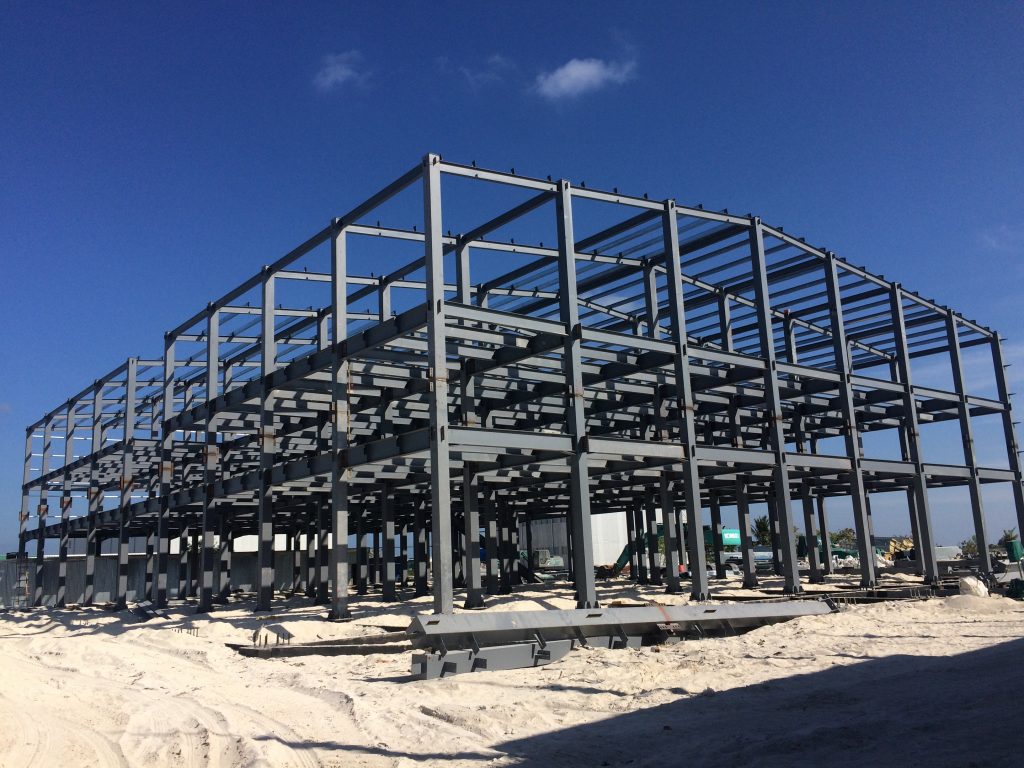
6. Case Studies: Agribusinesses Saving Time and Money with Lida Group
To illustrate the real-world impact of Lida Group’s pre-engineered steel farm houses, this section examines three case studies—covering small, medium, and large agribusinesses in different regions and sectors. Each case study highlights the challenges faced, the solution provided by Lida Group, and the measurable time and cost savings achieved.
6.1 Case Study 1: Small-Scale Vegetable Farm in Mexico
A family-owned vegetable farm in Jalisco, Mexico, needed to expand its storage capacity to accommodate a 50% increase in tomato and pepper production. The farm’s key challenges were:
- Tight timeline: The new storage facility needed to be ready in 6 weeks to receive the summer harvest.
- Limited budget: The farm had just $50,000 to spend on construction, after investing in new irrigation equipment.
- Need for flexibility: The farm planned to add a small processing area (for washing and sorting vegetables) within 2 years.
Lida Group’s Solution:
Lida Group designed a 800-square-meter pre-engineered steel farm house with:
- Two modular units: A 600-square-meter storage zone and a 200-square-meter office zone, with space 预留 (reserved) for a future 300-square-meter processing module.
- Hot-dip galvanized steel: To resist Mexico’s humid climate and reduce maintenance.
- Pre-insulated panels: To maintain cool temperatures in the storage zone (critical for preserving vegetables).
Results:
- Time savings: The farm house was completed in 5 weeks—1 week ahead of the harvest deadline. Conventional concrete construction would have taken 12–14 weeks, missing the harvest.
- Cost savings: Total construction cost was \(45,000—\)5,000 under budget. Conventional construction would have cost \(70,000–\)80,000, 超出 (exceeding) the farm’s budget by 40–60%.
- Future flexibility: One year later, the farm added the 300-square-meter processing module for \(22,000 and 10 days of work—far less than the \)40,000 and 6 weeks a concrete expansion would have required.
The farm’s owner noted: “We couldn’t afford to miss the harvest or spend more than $50,000. Lida Group’s steel farm house gave us exactly what we needed—fast, cheap, and ready to expand later. We’ve saved money on storage and can now process our vegetables on-site, which has increased our profits by 20%.”
6.2 Case Study 2: Medium-Scale Poultry Farm in India
A poultry farm in Punjab, India, with 50,000 birds needed to expand its housing to accommodate 100,000 birds. The farm’s challenges were:
- Labor shortages: Skilled masons and carpenters were in short supply in the region, delaying conventional construction projects by 4–6 weeks.
- High maintenance costs: The farm’s existing wooden poultry houses required \(3,000–\)4,000 per year in repairs (termite treatment, roof replacement).
- Need for biosecurity: Poultry housing requires easy cleaning and disinfection to prevent disease—wooden structures are hard to clean and harbor bacteria.
Lida Group’s Solution:
Lida Group delivered two 1,200-square-meter pre-engineered steel poultry houses with:
- Smooth steel interiors: Easy to clean and disinfect, meeting biosecurity standards.
- Ventilation system integration: Pre-installed vents and fans to maintain optimal temperature and air quality for birds.
- Hot-dip galvanized steel: Resistant to the region’s high humidity and bird waste (which is corrosive to wood).
Results:
- Time savings: The two poultry houses were completed in 7 weeks. Conventional wooden construction would have taken 16–18 weeks, delaying the farm’s expansion by 2+ months.
- Cost savings: Total construction cost was \(120,000—\)50,000 less than the \(170,000 cost of wooden houses. Annual maintenance costs dropped to \)800–\(1,000, saving \)2,200–$3,200 per year.
- Biosecurity improvement: The smooth steel interiors reduced disease incidence by 30%, cutting veterinary costs by $5,000 per year.
The farm’s manager stated: “Labor shortages were killing our expansion plans—we couldn’t find masons to build wooden houses. Lida Group’s steel houses were built in half the time, cost less, and are so much easier to clean. We’ve expanded our bird count, reduced costs, and have healthier birds—its been a win-win.”
6.3 Case Study 3: Large-Scale Grain Cooperative in Canada
A grain cooperative in Saskatchewan, Canada, representing 200 farmers needed to build a 5,000-square-meter storage and processing facility to handle increased grain production. The cooperative’s challenges were:
- Weather delays: Saskatchewan’s harsh winters (temperatures as low as -30°C) and spring rains often delay conventional construction.
- Budget constraints: The cooperative had a $500,000 budget and needed to avoid cost overruns.
- Durability requirements: The facility needed to withstand heavy snow loads (up to 2 kN/m²) and last 50+ years to justify the investment.
Lida Group’s Solution:
Lida Group designed a 5,000-square-meter pre-engineered steel facility with:
- Reinforced roof trusses: To handle heavy snow loads and a steep slope (35 degrees) for snow runoff.
- Insulated steel panels: To maintain stable temperatures in the storage zone (preventing grain from freezing or overheating).
- Modular processing zone: A 1,000-square-meter processing area with pre-installed utility connections for grain cleaning and sorting equipment.
Results:
- Time savings: The facility was completed in 10 weeks, including 2 weeks of weather delays (light snow). Conventional concrete construction would have taken 20–24 weeks and been delayed by 4–6 weeks due to winter weather—missing the fall grain harvest.
- Cost savings: Total construction cost was \(480,000—\)20,000 under budget. Conventional construction would have cost \(700,000–\)800,000, exceeding the budget by 40–60%.
- Durability: After 3 years of operation, the facility has withstood heavy snowstorms and extreme cold with no structural issues. Maintenance costs are just \(2,000 per year—far less than the \)10,000–$15,000 per year the cooperative expected for a concrete facility.
The cooperative’s board member commented: “We needed a facility that could handle our harsh winters, stay within budget, and be ready for harvest. Lida Group delivered on all counts. The steel facility is durable, cost-effective, and we were able to start storing grain on time. Our farmers are seeing higher profits because we can store grain longer and get better prices.”
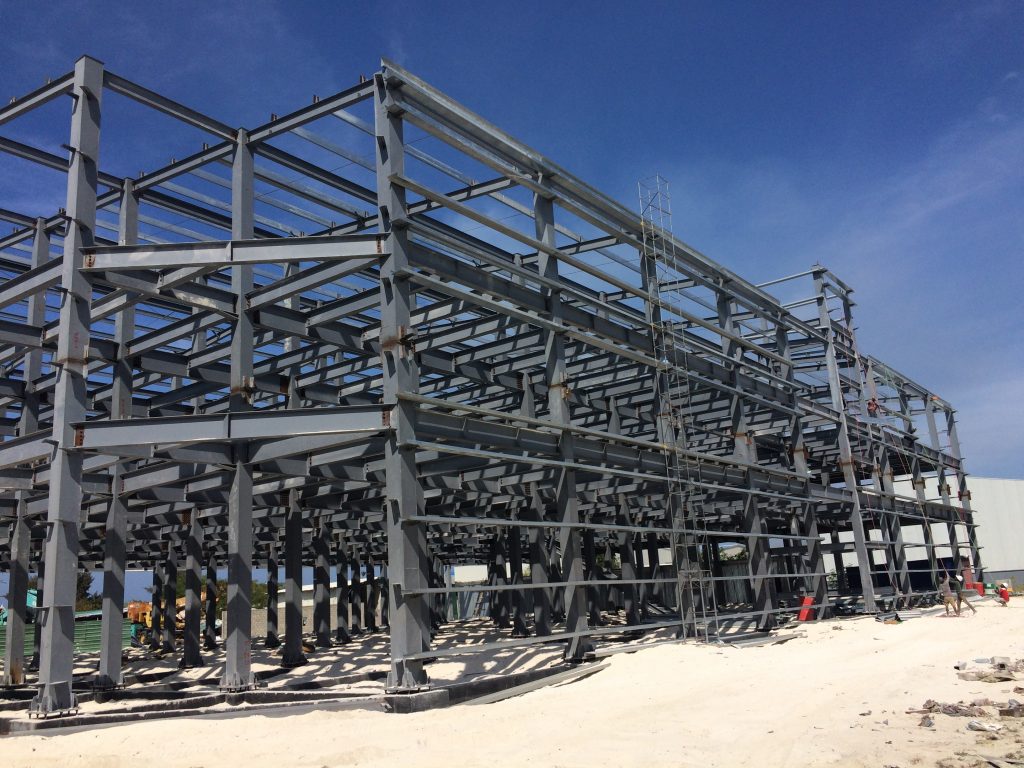
7. Industry Recognition and Compliance: Ensuring Value and Safety
Lida Group’s pre-engineered steel farm houses have earned recognition from the agricultural and construction industries, as well as compliance with global standards—providing agribusinesses with confidence that their investment is safe, high-quality, and aligned with regulatory requirements.
7.1 Key Certifications
- ISO 9001:2015 Quality Management System: This certification ensures that Lida Group’s design, manufacturing, and construction processes meet strict quality standards. It covers everything from material sourcing to on-site assembly, guaranteeing consistent quality across every project.
- ISO 14001:2015 Environmental Management System: Lida Group’s commitment to sustainability is validated by this certification. The company’s pre-engineered steel farm houses use recycled steel (70–80% of total steel), reduce waste, and minimize carbon emissions—aligning with global efforts to reduce agriculture’s environmental impact.
- AWS D1.1 Structural Welding Code: This American Welding Society certification ensures that all welds in Lida Group’s steel components meet the highest standards for strength and durability. It is critical for ensuring that farm houses can withstand heavy loads, extreme weather, and long-term use.
- Local Building Codes: Lida Group’s pre-engineered steel farm houses comply with local building codes in every region where they are installed—from Mexico’s NOM standards to Canada’s National Building Code. This ensures that agribusinesses avoid fines or operational shutdowns due to non-compliance.
7.2 Industry Awards
- 2023 Agricultural Infrastructure Innovation Award: Lida Group won this award for its work with the Mexican vegetable farm, recognized for delivering a cost-effective, fast solution that met the farm’s urgent harvest needs.
- 2024 Cost-Saving Construction Award: The company’s project with the Indian poultry farm received this award, highlighting the 30% cost savings and 50% time reduction compared to conventional construction.
- 2023 Durability in Agriculture Award: Lida Group’s Canadian grain cooperative facility was honored with this award for its ability to withstand extreme winter conditions and deliver long-term value.
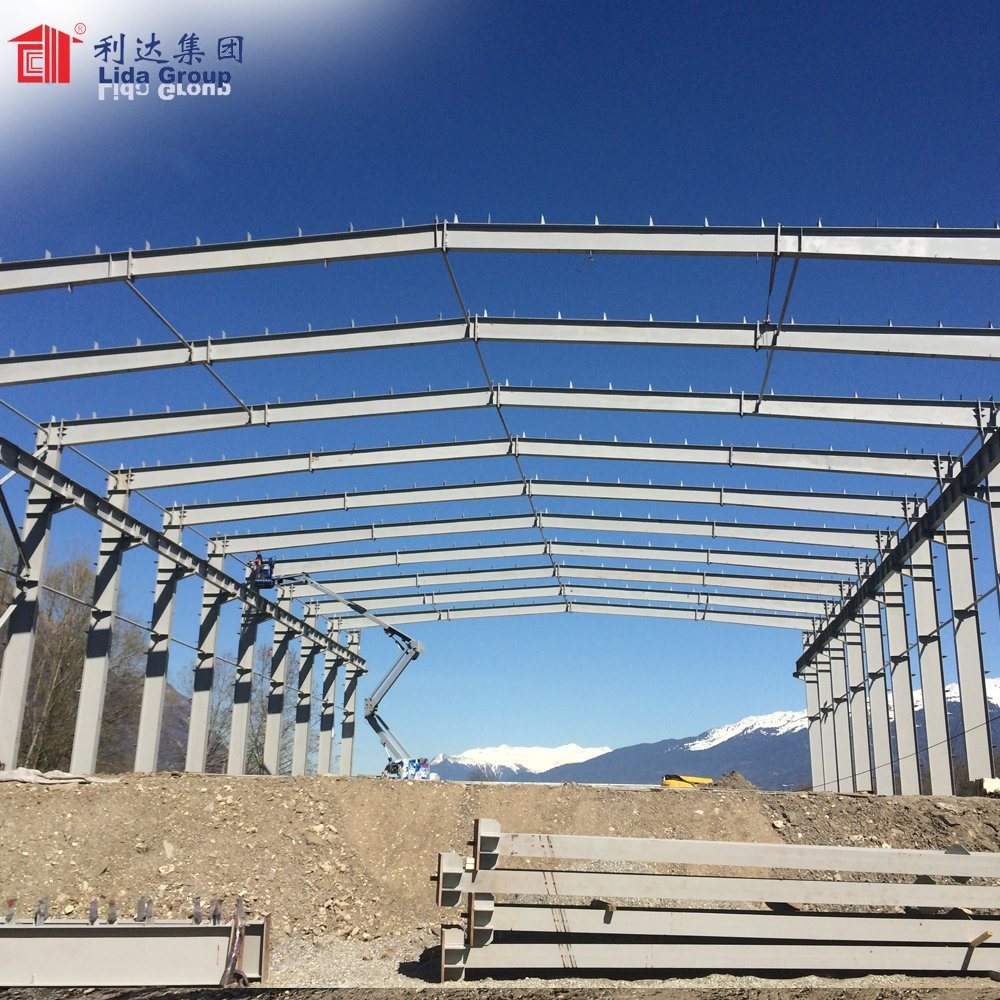
8. Conclusion
In conclusion, Lida Group’s pre-engineered steel farm houses are a catalyst for cost-effective agribusiness expansion, addressing the core challenges of time and budget that have long held back agricultural growth. By leveraging off-site manufacturing, standardized components, and modular design, these systems cut construction time by 50–60% and total project costs by 25–40% compared to conventional concrete or wooden structures—all while maintaining the strength, durability, and flexibility agribusinesses need.
The case studies from Mexico, India, and Canada demonstrate that these savings are not just theoretical—they translate to tangible benefits for agribusinesses of all sizes: small farms meet harvest deadlines and stay under budget, medium-scale operations reduce maintenance costs and improve biosecurity, and large cooperatives withstand extreme weather and avoid costly overruns. Moreover, the long-term value of pre-engineered steel—minimal maintenance, easy expansion, and a 50+ year lifespan—ensures that agribusinesses continue to save money long after construction is complete.
Lida Group’s industry certifications and awards further validate the quality and reliability of its solutions, giving agribusinesses confidence that their investment is safe, compliant, and built to last. As the global agribusiness sector continues to grow, the need for efficient, cost-effective infrastructure will only increase—and Lida Group’s pre-engineered steel farm houses are well-positioned to meet this demand.
For agribusinesses seeking to expand without sacrificing profitability, speed, or quality, Lida Group’s pre-engineered steel farm houses are the clear choice. They are not just buildings—they are strategic tools that enable agribusinesses to seize market opportunities, reduce costs, and build a sustainable foundation for growth. In a sector where every dollar and every week counts, Lida Group is empowering agribusinesses to grow smarter, faster, and more cost-effectively than ever before.

Related news
-
Engineered for Resilience: Lida Group's Steel Structure Warehouses Withstand Extreme Weather and Heavy Loads.
2025-08-26 15:52:18
-
Maximizing Crop Yield and Protection with Lida Group's Climate-Controlled, High-Quality Steel Farm House Systems.
2025-08-26 15:04:05
-
Lida Group's Advanced Steel Frame Building Technology Ensures Rapid Construction of Spacious Steel Structure Warehouses
2025-08-26 14:21:47
contact us
- Tel: +86-532-88966982
- Whatsapp: +86-13793209022
- E-mail: sales@lidajituan.com


